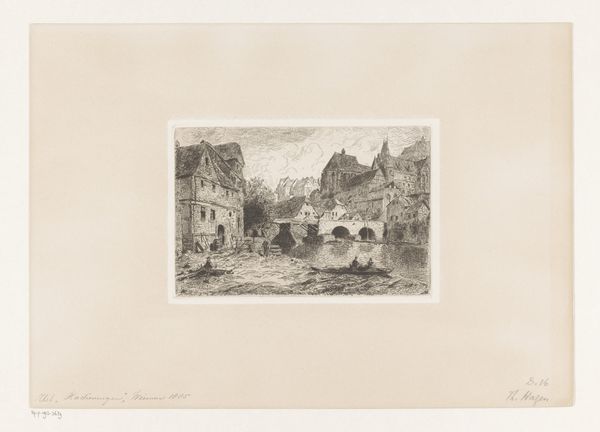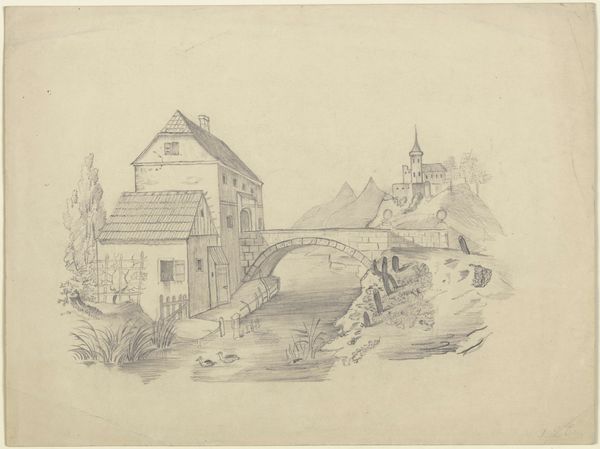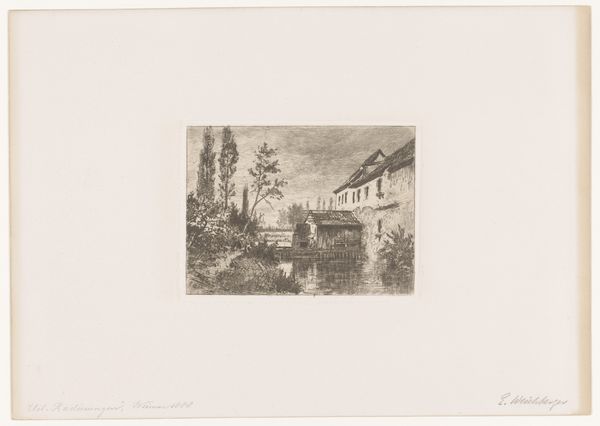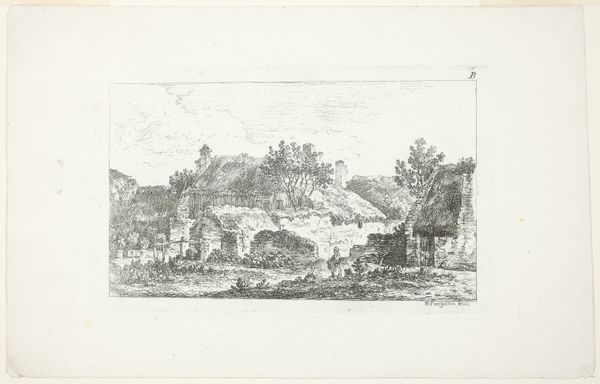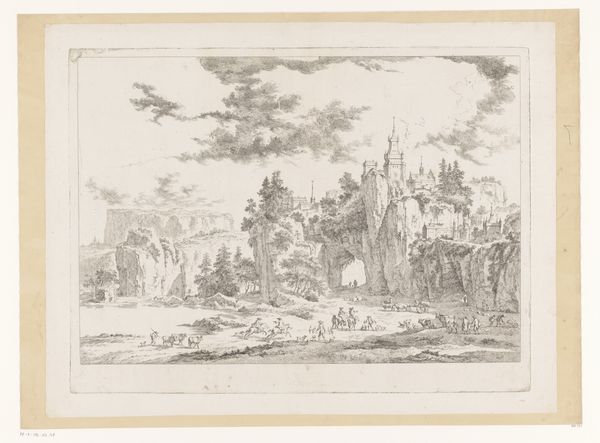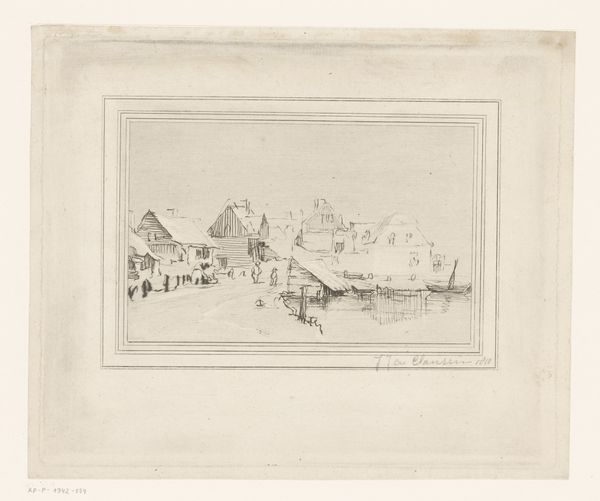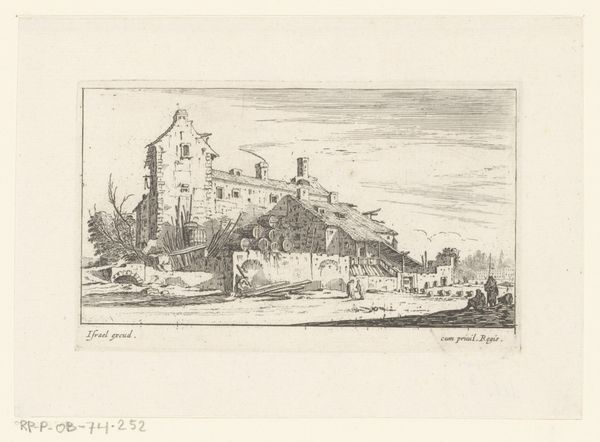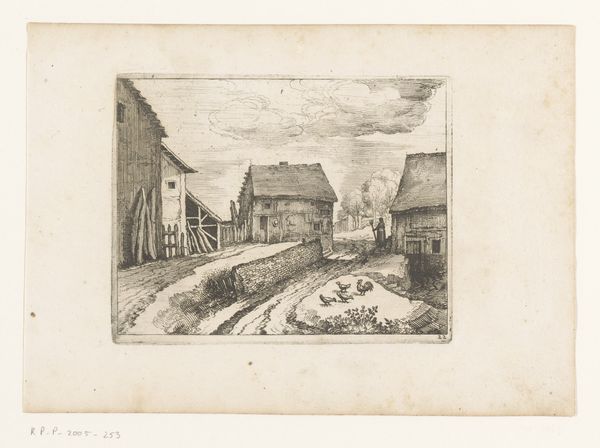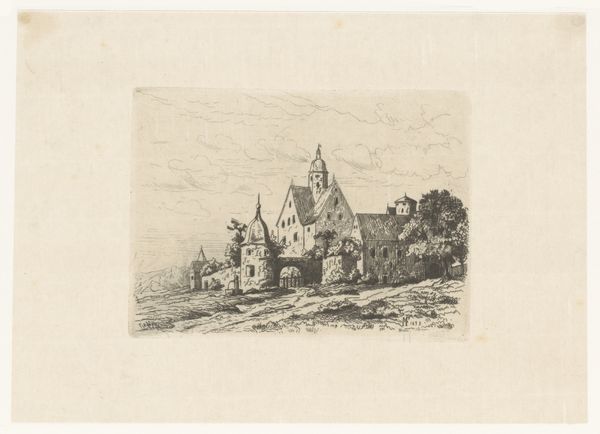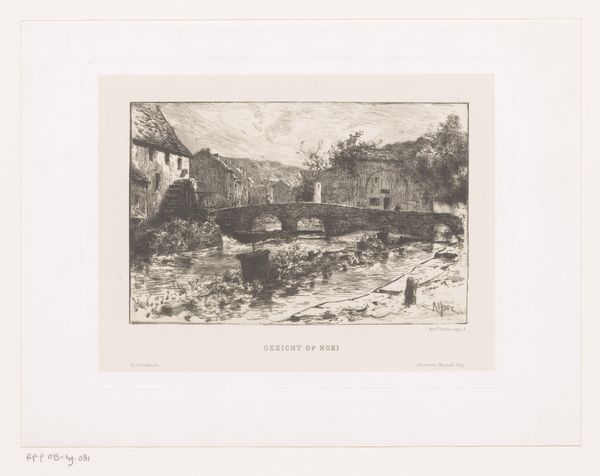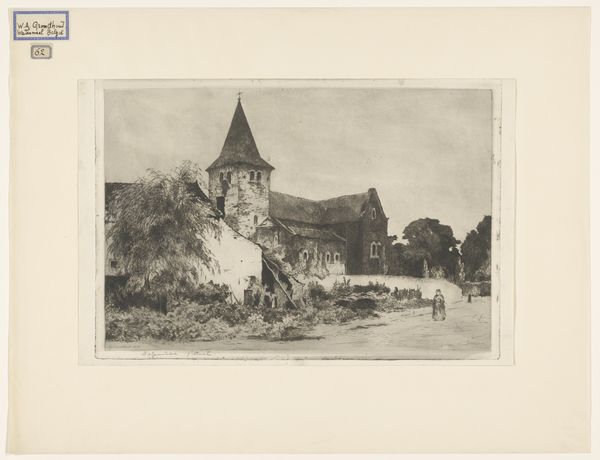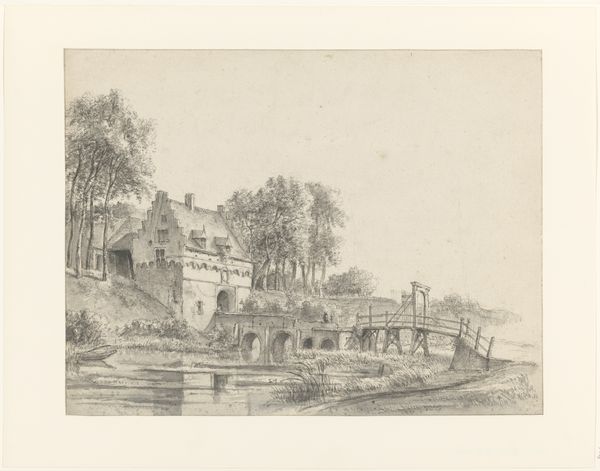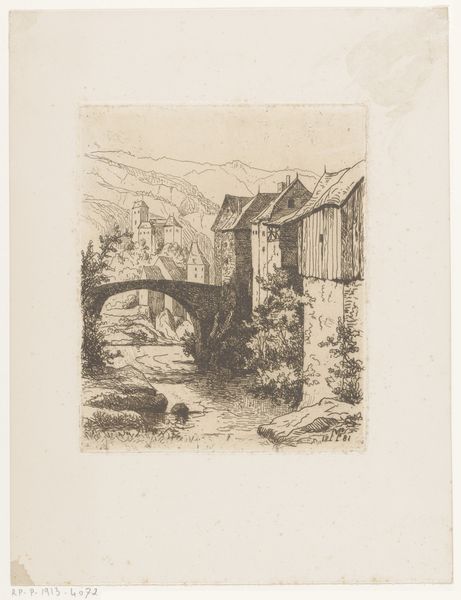
drawing, pencil
#
drawing
#
light pencil work
#
quirky sketch
#
pencil sketch
#
landscape
#
personal sketchbook
#
sketchwork
#
ink drawing experimentation
#
romanticism
#
pen-ink sketch
#
pencil
#
sketchbook drawing
#
cityscape
#
storyboard and sketchbook work
#
sketchbook art
Dimensions: height 226 mm, width 292 mm
Copyright: Rijks Museum: Open Domain
Curator: Welcome to the Rijksmuseum. Before us hangs Eugène Cicéri's 1843 pencil drawing, "Zicht in een Bretons dorp" – or "View of a Breton Village." Editor: It feels almost dreamlike, doesn't it? The soft pencil work creates this hazy, nostalgic atmosphere. Like a memory fading at the edges. Curator: Absolutely. And it’s more than just a simple landscape. Cicéri masterfully utilizes the pencil to capture the texture of the stone buildings, the flow of the water. Note the way he suggests the weight of the stone bridge and the rocky outcropping through variations in shading. Editor: I'm particularly drawn to the figures. They're small, but their presence activates the scene. See those two women in the foreground; their stooped posture perhaps carries more than we imagine. It speaks of the everyday lives and labor embedded in this landscape. Curator: Precisely! There’s a narrative woven in there, subtle yet pervasive. Consider the bridge itself, acting as a prominent symbol throughout art history. It's a transitional space; a point of connection, both physical and metaphorical, for the villagers going about their daily routines. This is not merely the illustration of geography. Editor: Yes, and look how it physically connects the darker structures on the left to the rocky cliffside bathed in more sunlight on the right. Symbolically there might be tension as well; old tradition vs modern prospects, shadow vs. light. Curator: I agree; this is what allows the drawing to communicate that universal romantic yearning to escape to simple lifestyles in natural landscapes, the 'noble peasant' idea, even if partially fantasized. It's clear Cicéri intended more than a purely representational artwork. Editor: You’re right. It's a scene both ordinary and extraordinary, infused with symbols and feeling. What started out as a quaint location turns into a tableau of people living and working and creating their legacy in time. Curator: Indeed. Studying how it was constructed deepens my appreciation and reveals an important piece of art history. Editor: And I find myself now captivated by the human touch imbuing even the seemingly simplest rendering with stories of people, places, and universal yearning.
Comments
No comments
Be the first to comment and join the conversation on the ultimate creative platform.
